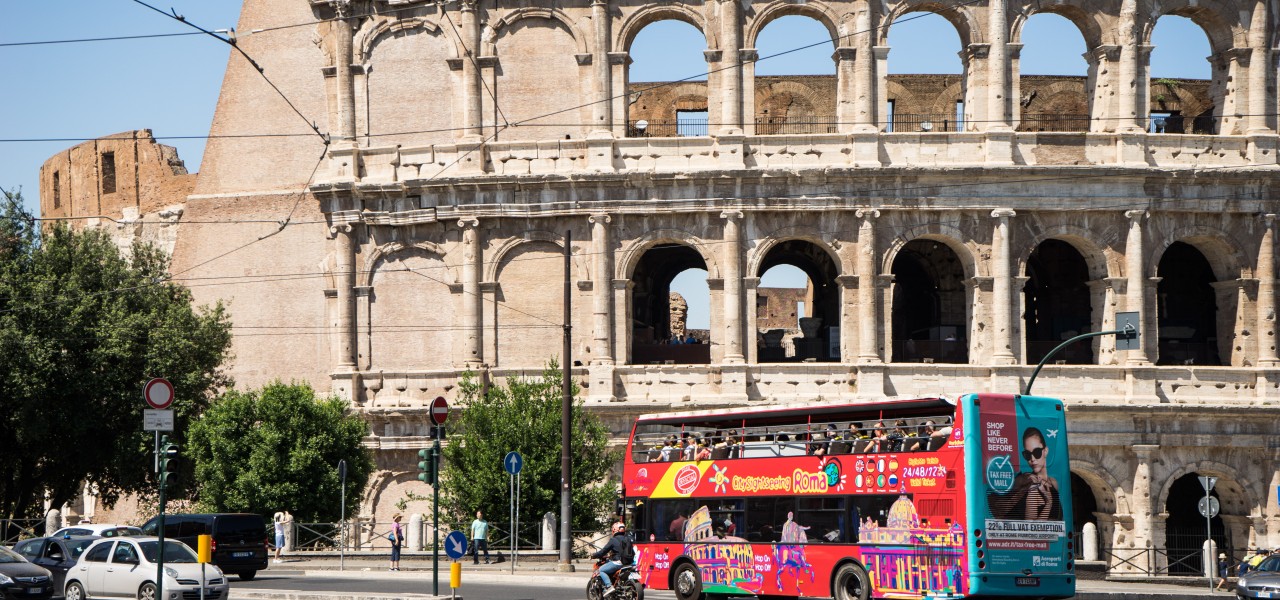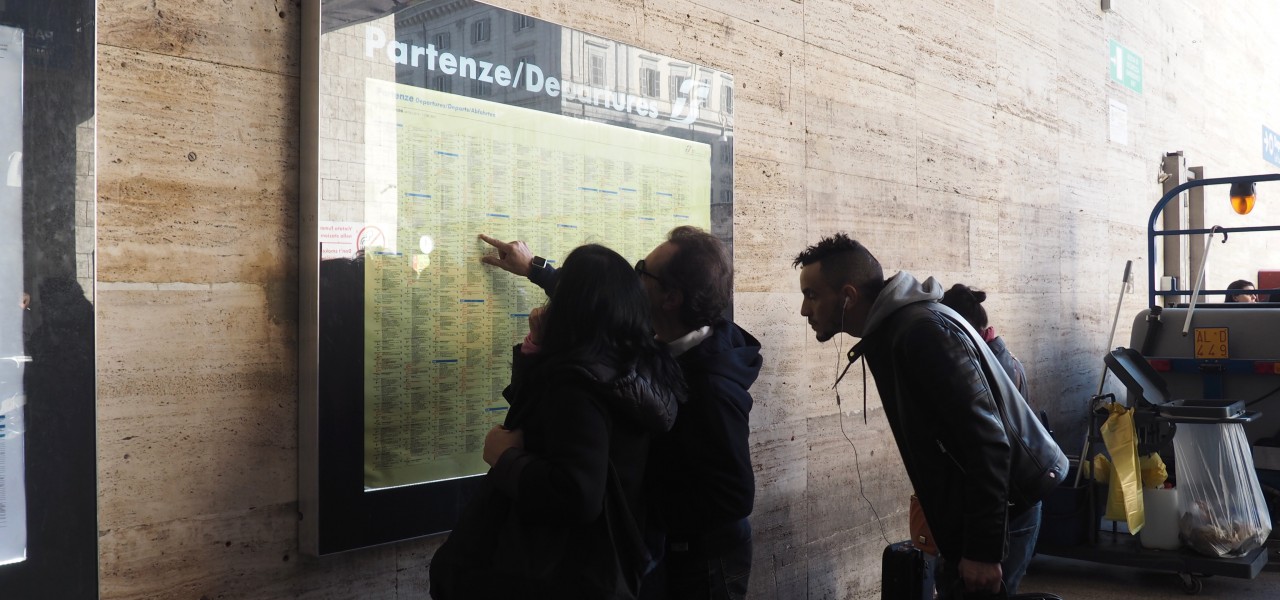Piazza Navona Rome. This piazza is one of the Rome’s most famous squares, having its origins in ancient times. Having a look at the square’s shape, one can imagine the magnitude of the sports arena that used to stand on this very spot. You can find more information and facts about the famous Piazza Navona in this article.
Piazza Navona Rome: Tips and useful information about Rome’s Piazza Navona
The square Piazza Navona in Rome is located in the center of Campus Martius, which in ancient times was located outside the city walls. Today this district of Rome is called Parione. Piazza Navona is where Romans like to go for a walk on Sundays, artists sell their paintings and objects of art and musicians play for passing tourists.
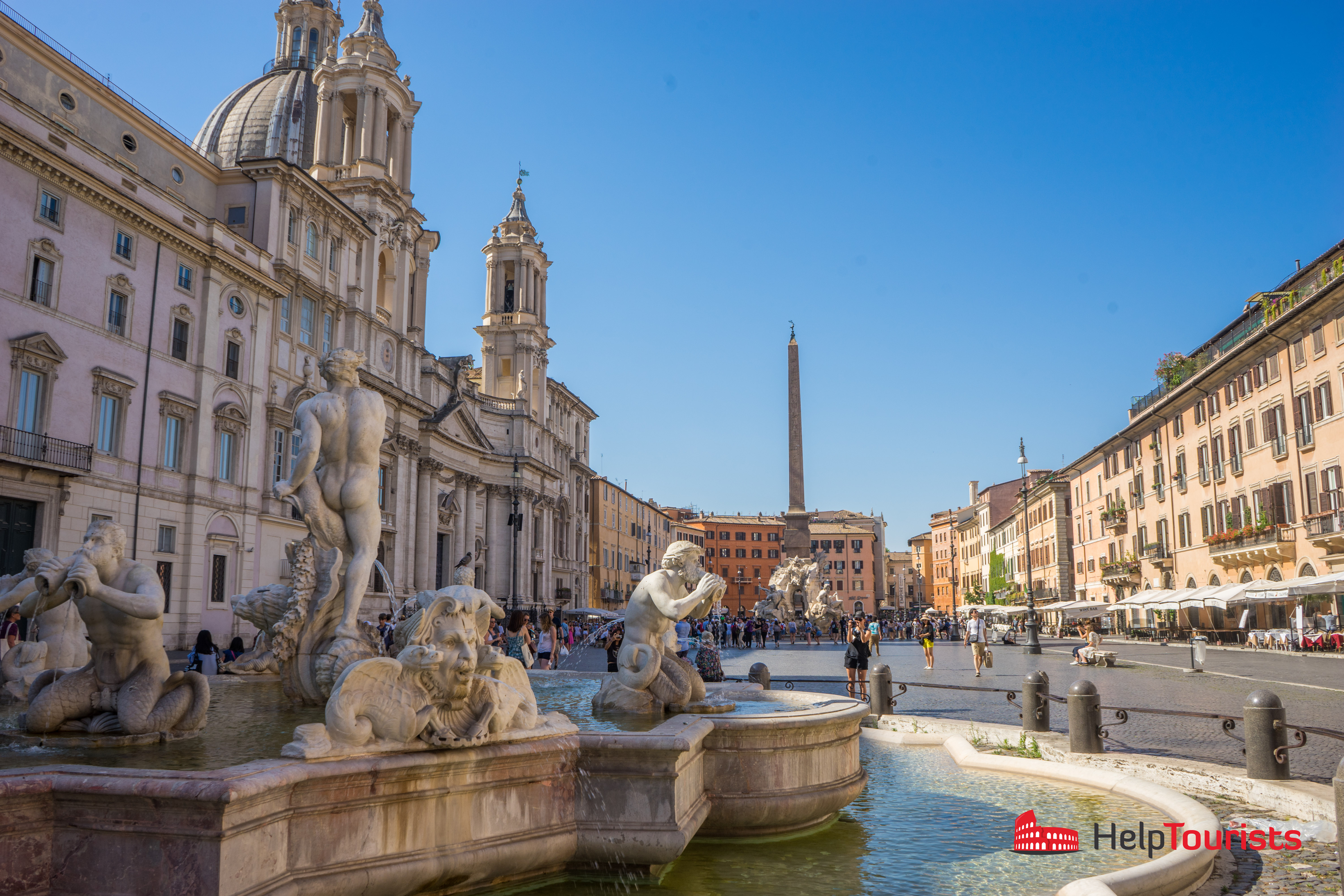
Piazza Navona in Rome is 240 meters long and 65 meters wide. In total, there are 9 entries to the square. As so often, small alleys lead onto the square and the full view onto the square is only revealed the last moment. Only the Via Agonale is wide enough to be able to see Piazza Navona from far away.
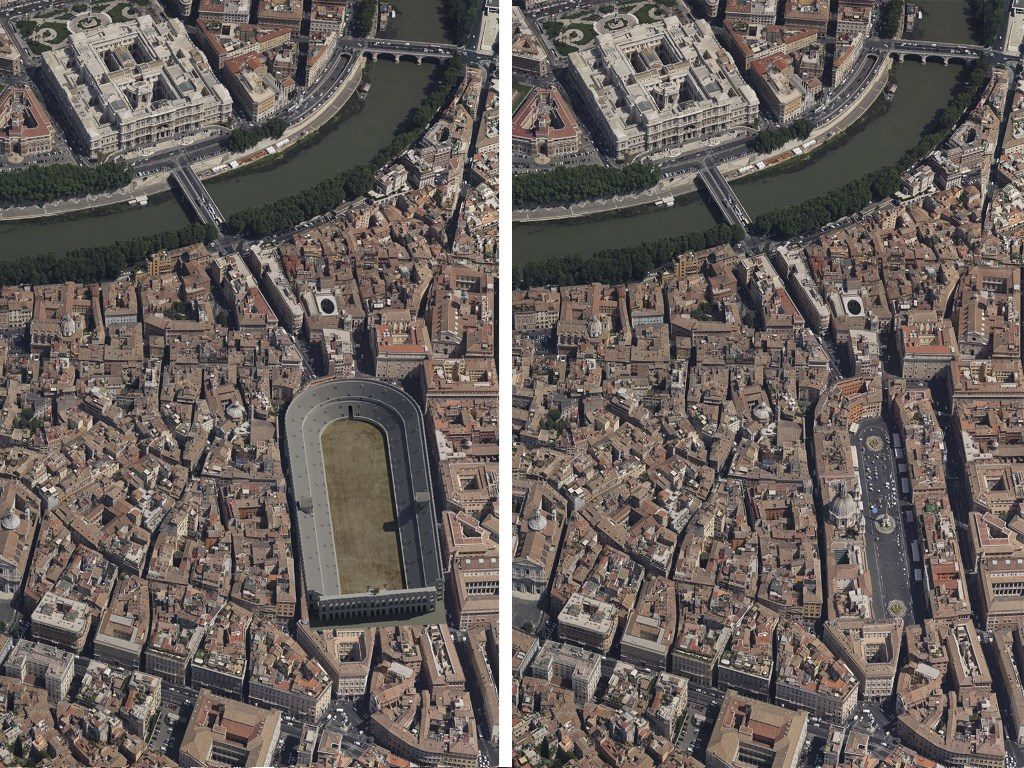
Piazza Navona is built on an ancient athlete arena. At the place of today’s buildings were the grandstands. The area of the square corresponds to the former arena, which was then six meters lower. On the northern side of the square one can see the oval shape of the former running track, whereas the southern side was built in a rectangular shape. In the center of Piazza Navona in Rome is the Fountain of the Four Rivers, on the northern edge the Neptune Fountain and on the southern side the Fontana del Moro. At the center of the western facade is the Church of Sant’Agnese in Agone.
Piazza Navona Rome: How to get to Piazza Navona in Rome
Piazza Navona is one of the biggest squares in Rome and easy to reach by public transport. On Corso Vittorio Emanuele II, leading from the Torre Argentine to the Vatican, the buses 46, 62, 64 and 916 as well as the night buses N5, N15 and N20 stop right next to the square (station Corso Vittorio Emanuele II/Navona). On the opposite site of the Corso you can take buses to go to Campo de‘ Fiori and the Palazzo Farnese. At Corso del Rinascimento, at the Rinascimento stop, there are the buses 30, 70, 82, 87, 492 and the night bus N7. The best walk from the Vatican to Piazza Navona goes past the Castel Sant’Angelo over the Angel Bridge and then half left into Via di Panico and on the left through Via dei Coronari.
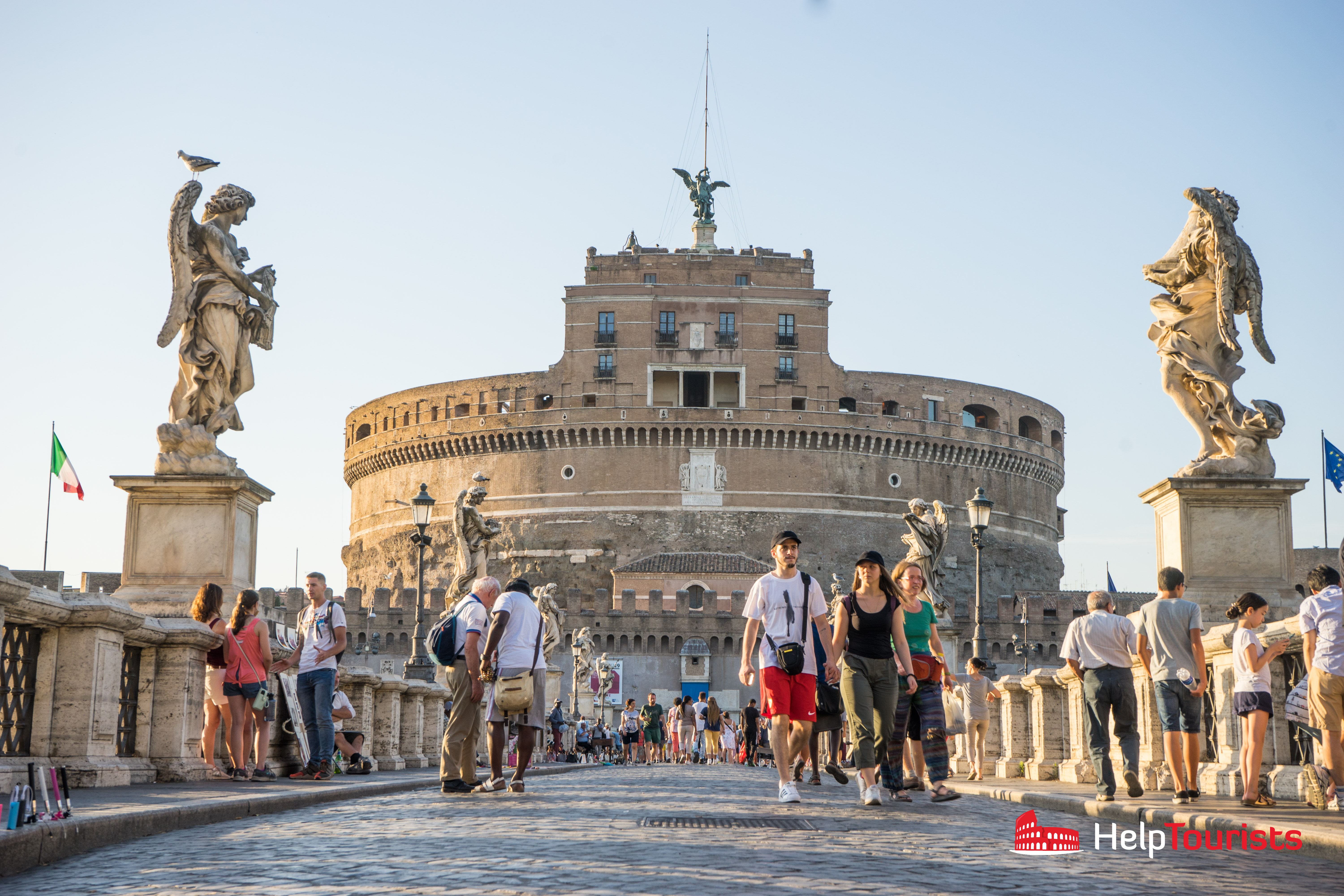
From Via del Corso, you will need to cross Piazza Colonna and pass the Palazzo Chigi government seat and continue past the Parliament in the Palazzo di Monte Citorio.

From there you walk towards the Pantheon and continue through Via Giustiniani, passing the Senate building Palazzo Madama to Corso del Rinascimento. Opposite the Senate building, you will reach Piazza Navona through the Corsica Agonale.
Piazza Navona Rome: Opening hours and admission fees to Piazza Navona
Piazza Navona is always open to public and the entry is free. Only for special occasions such as the Christmas market, there might be security checks at the entries to Piazza Navona.
Piazza Navona Rome: History and description of Piazza Navona in Rome
Piazza Navona was once a sports stadium built by Emperor Domitian in 85 A.D. Athletic competitions in Greek style were hold here. The stadium was called „circus agonalis“, Circus of competition. The stadium used to be 276 meters long and 106 meters wide. 30 000 visitors could take place on the stands. In contrast to racing facilities such as the Circus Maximus, there were no starting facilities for racehorses and no middle marking. Even the obelisk of Piazza Navona was built much later.
Piazza Navona Rome: Museum tip Museum of the Domitian stadium in Rome
It is said that the name Navona has its origins in the “inagonis”. Located on the backside of the stadium was an Odeon. The site was hence not only a sports venue but also a cultural center. There was a square between the stadium and the Pantheon with on its left the baths of Nero. On the backside of the oval shaped northern side, in the Via di Tor Sanguign, is the Museum of the Domitian stadium, where pieces of the old stadium can still be seen today. The museum is open daily from 10am until 7pm, on Saturdays until 8pm. The ticket price is 8€ including an audioguide. There is a reduced ticket at 6€ for people aged 12 to 18, seniors over 65 and Roma Pass holders.
Throughout the past centuries the construction switched owners and was used for games, knight jousting, as a market square and, beginning in the Renaissance as a venue for carnival. In 1488 the square was paved. In the 26th century Gregor XIII had 3 fountains built as drinking troughs for pack animals of the market. Like the Trevi Fountain, they are supplied by the aqueduct “Aqua Virgo”, which still works today and can be seen in the basement of the shopping mall La Rinascente in Via del Tritone.
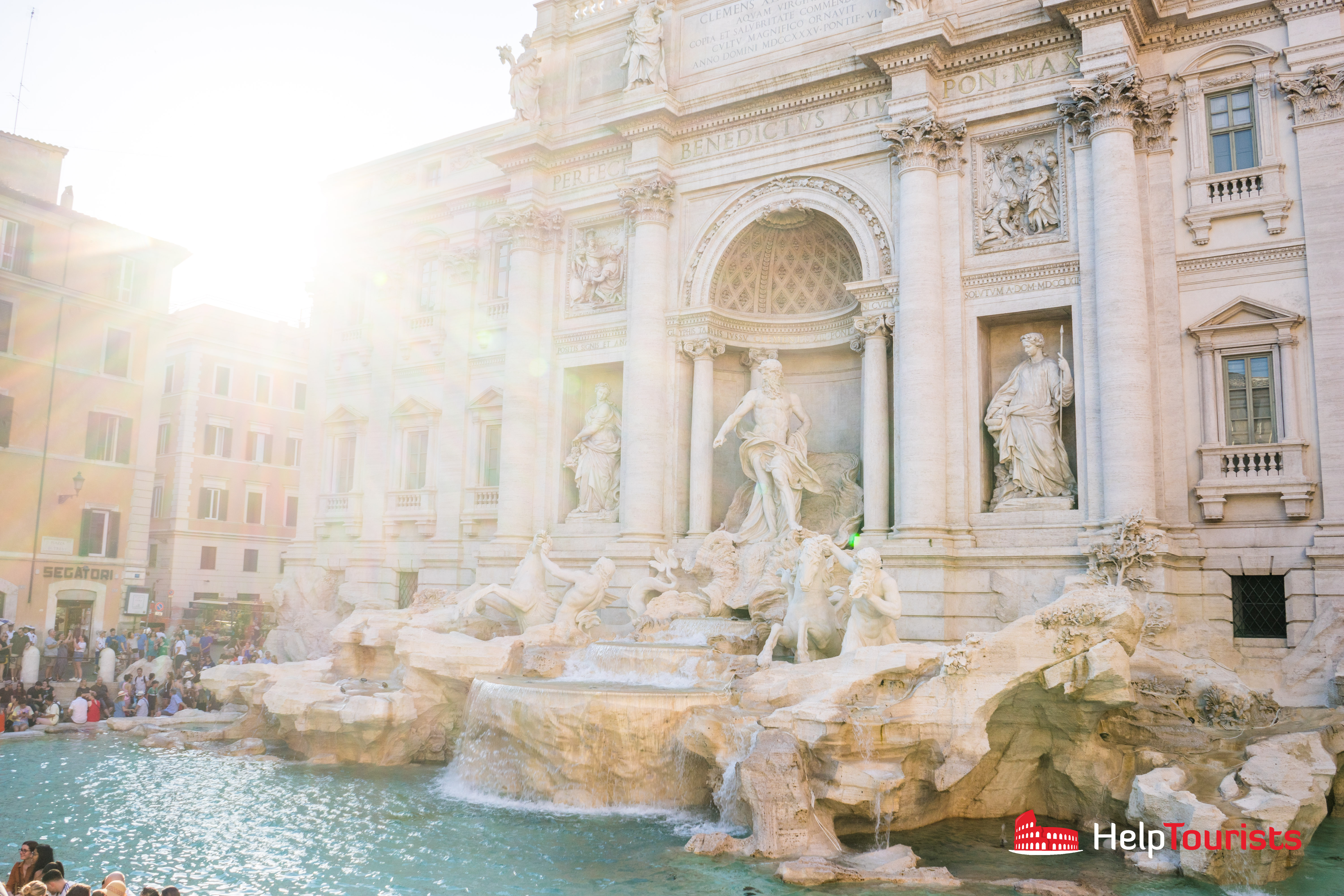
In 1630, influenced by the competition between the families Barberini and Farnese, cardinal Giovanni Battista Pamphilj who became Pope in 1644, decided to construct a majestic family palace. This is where the famous Donna Olimpia Maidalchini Pamphilj who married into the family, lived. She was regarded as domineering and clever and as a widow collected many valuables making her the Lady of Rome, especially after her cousin became Pope Innocent X. Today the Brazilian Embassy is located here.
Piazza Navona Rome: Information about the obelisk on Piazza Navona
The rival architect Gian Lorenzo Bernini and Francesco Borromini had great influence on the baroque character of the square. Innocent X. gave the order to build the central fountain to Borromini who actually was not on good terms with Donna Olimpia at first. After giving her a silver model of the Fountain of Four Rivers he got the job in 1647.
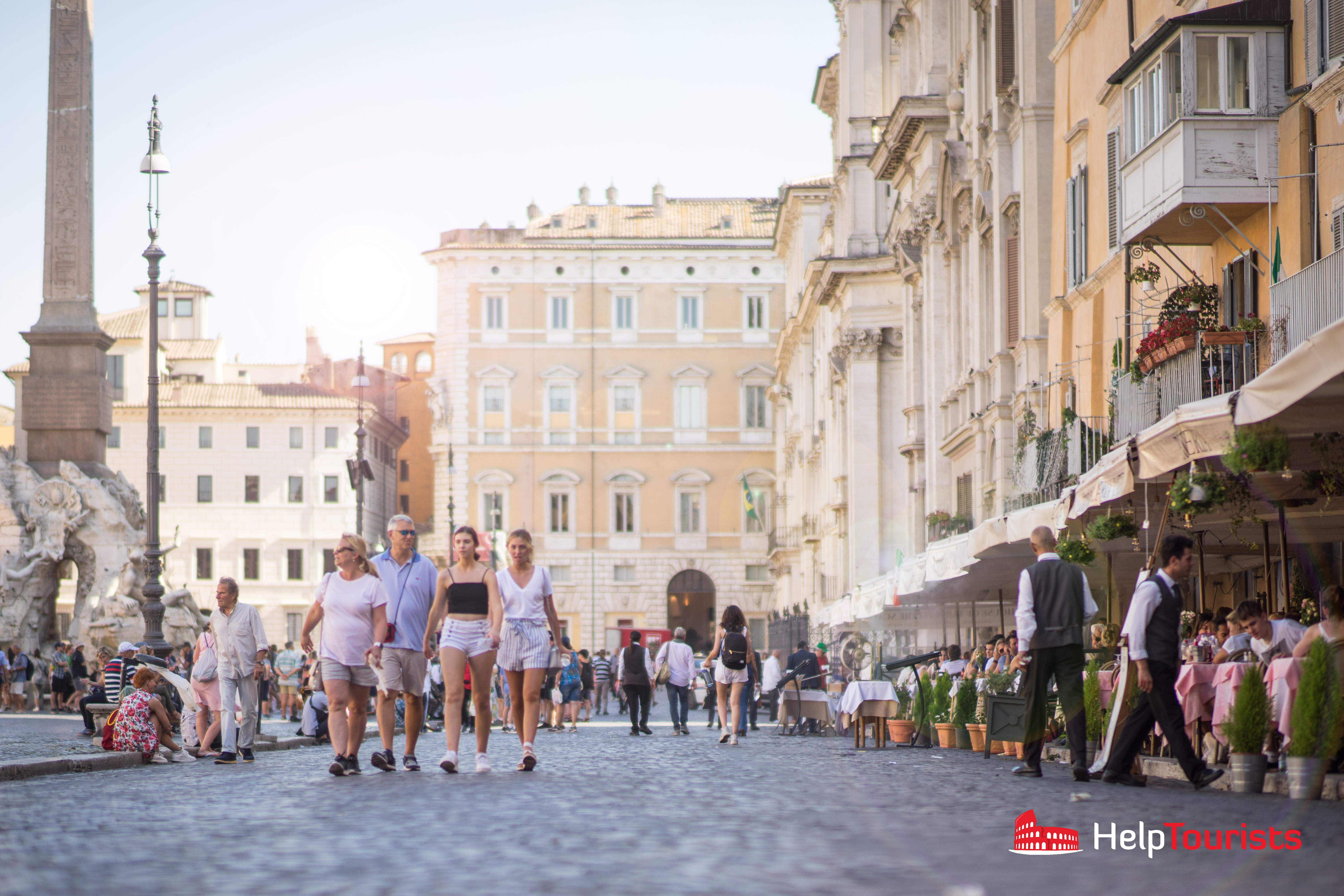
When Pope Innocent saw an obelisk lying on the ground of the Via Appia Antica at the Circus of Massentius, he decided to have him set up on the well. It can be seen from the hieroglyphics that the obelisk originally stood at the Temple of Isis. The 16.54 meter high obelisk in Piazza Navona was placed on a pedestal to make it look even higher. The fountain itself was inaugurated in 1651.
Piazza Navona Fountain: Information about the Fountain of Four Rivers in Rome
The Fountain of Four Rivers depicts four rivers, one of every continent known at the time: Danube, Nile, Ganges and Rio della Plata. Four five meter high marble statues show the 4 rivers. The river Danube was chiseled by Antonio Raggi and points to one of the two emblems of the Pamphili on the fountain. Ganges by Claude Poussin is holding a rudder.

The two other statues by Bernini facing the Church Sant’Agnese in Agone are supposed to show Bernini’s contempt for his rival Borromini. Nile chiseled by Giacomo Antonio Fancelli, covers his head. The official explanation is that at the time the sources of the Nile were still unknown. The Rio della Plata carved by Francesco Baratta, has a sack of money and looks with a defensive gesture towards the Roman church of Borromini to protect himself from a possible fall. Officially, this explanation is incorrect, since the church of Borromini was only built from 1653 until 1657. But I suppose that Bernini could already imagine that Borromini would get the order for the church.
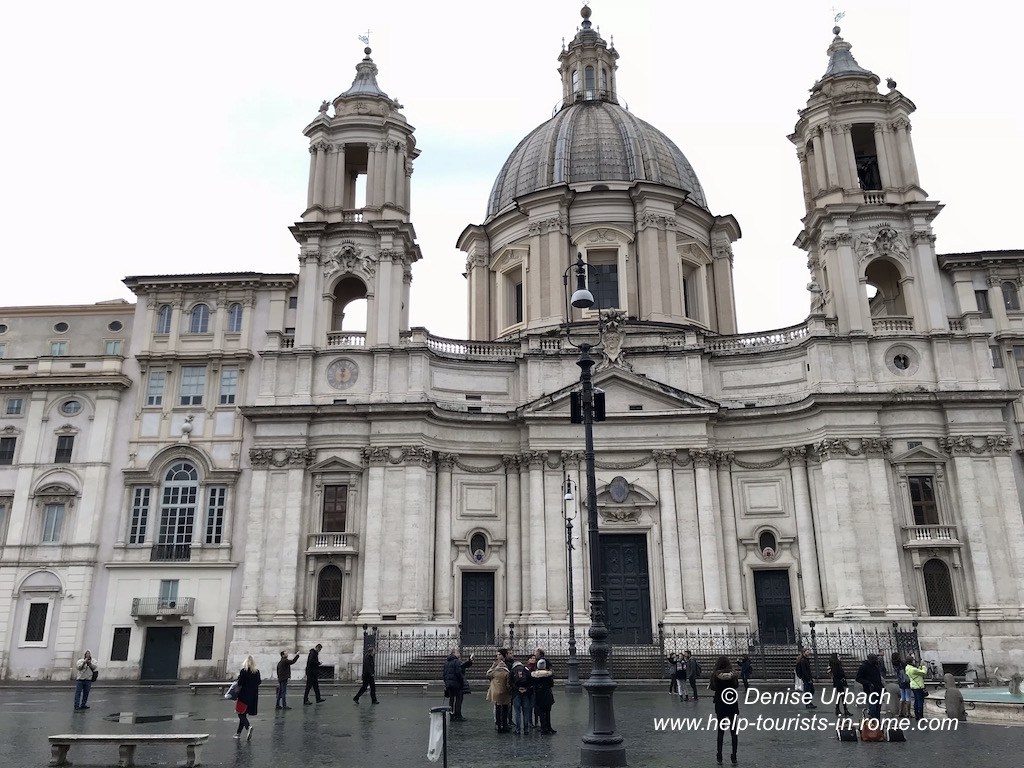
The first church on this spot was built in the 8th century and modified several times. In 1652 constructions for today’s church by Borromini started. The church is open daily from 9am until 1pm and from 3pm until 7pm, on Sundays until 8pm. Concerts frequently take place inside the church. Remnants of the original church are being excavated in the crypt and parts of the old stadium are coming to light. It is said that the facade’s statue of Saint Agnes who has placed her hand on her chest, reassures the river Rio della Plata that the church won’t fall.
Piazza Navona Rome: Neptune’s Fountain and Fontana del Moro
The two other fountain on Piazza Navona, the Neptune’s Fountain and the Fontana del Moro, were originally built by Jacopo Della Porta in 1574 under the order of Gregor XIII. The southern fountain was renovated by Bernini in 1652 who added there dolphins carrying a water-spitting snail in the center. Since Pope Innocent X. didn’t like the snail it was replaced by the statue of an Ethiopian fighting a dolphin. The second tub going down to ground level was added later.

The northern fountain was neglected for a long time. And the municipality of Rome did not build the central figure of Neptune, the seahorses and monsters fighting sirens until 1853.
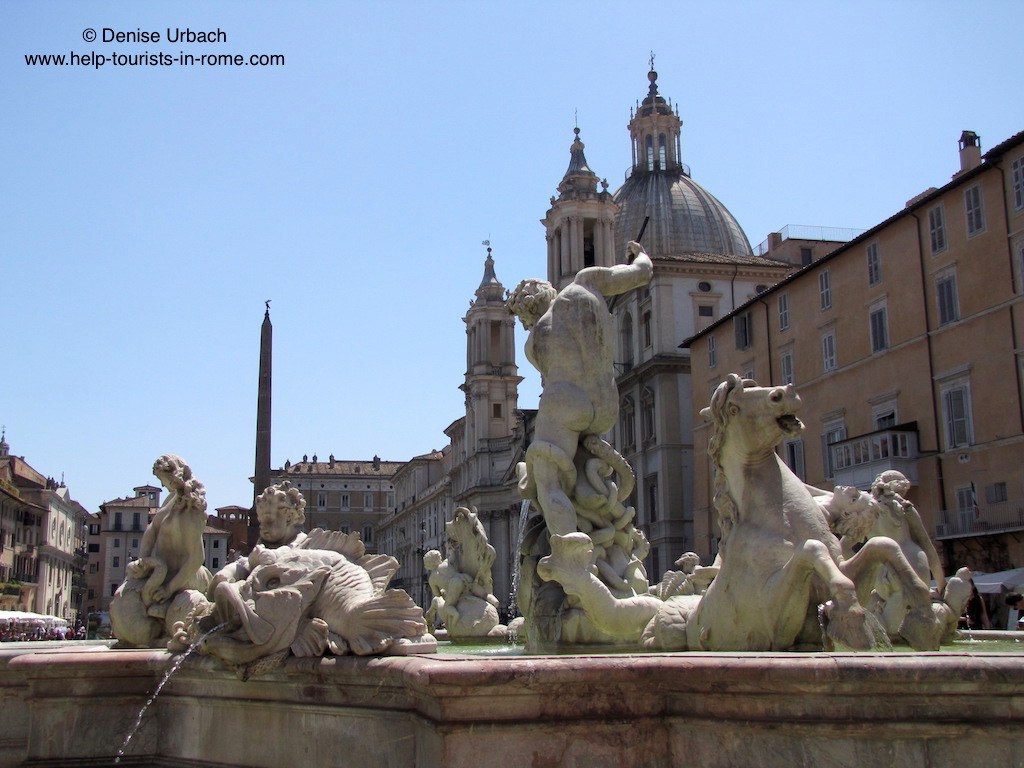
In 1652 Pope Innocent X. started the tradition of closing the exits and flooding Piazza Navona on the weekends. Back then the square was concave and the water stood half a meter high. Romans loved this event especially during summer heat. They could bath and take their boats to the square. This tradition was continued with interruptions until 1865.
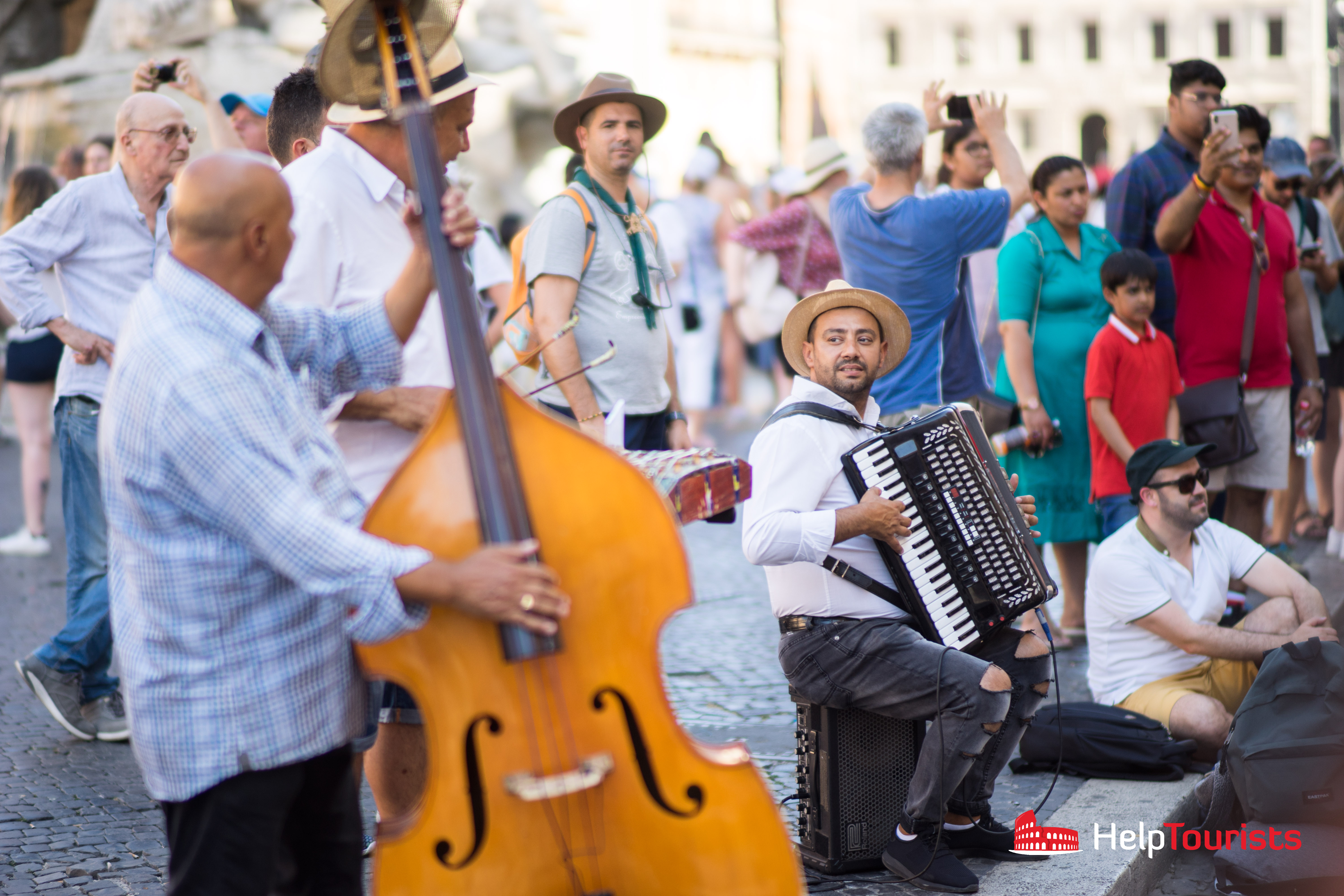
At the end of the 18th century the Palazzo Braschi was erected in the south. Today it houses the Museo di Roma. After 1870 when Rome became the capital, the central footpath was built and the square was paved.
Piazza Navona Restaurants: Restaurant tips
Notable for its location is the restaurant Terrazze del Borromini, a restaurant located in the two upper floors of Hotel Eitch, next to the church of Sant’Agnese, overlooking Piazza Navona. Hotel and restaurant are both very good, but unfortunately not exactly cheap. On the terrace you can also enjoy a breakfast or aperitif, it is open every day from 9am to 2pm. The entrance can be found at the back of the square in Via di Santa Maria dell’Anima 30. (Below is an example of a restaurant in Piazza Navona in Rome.)
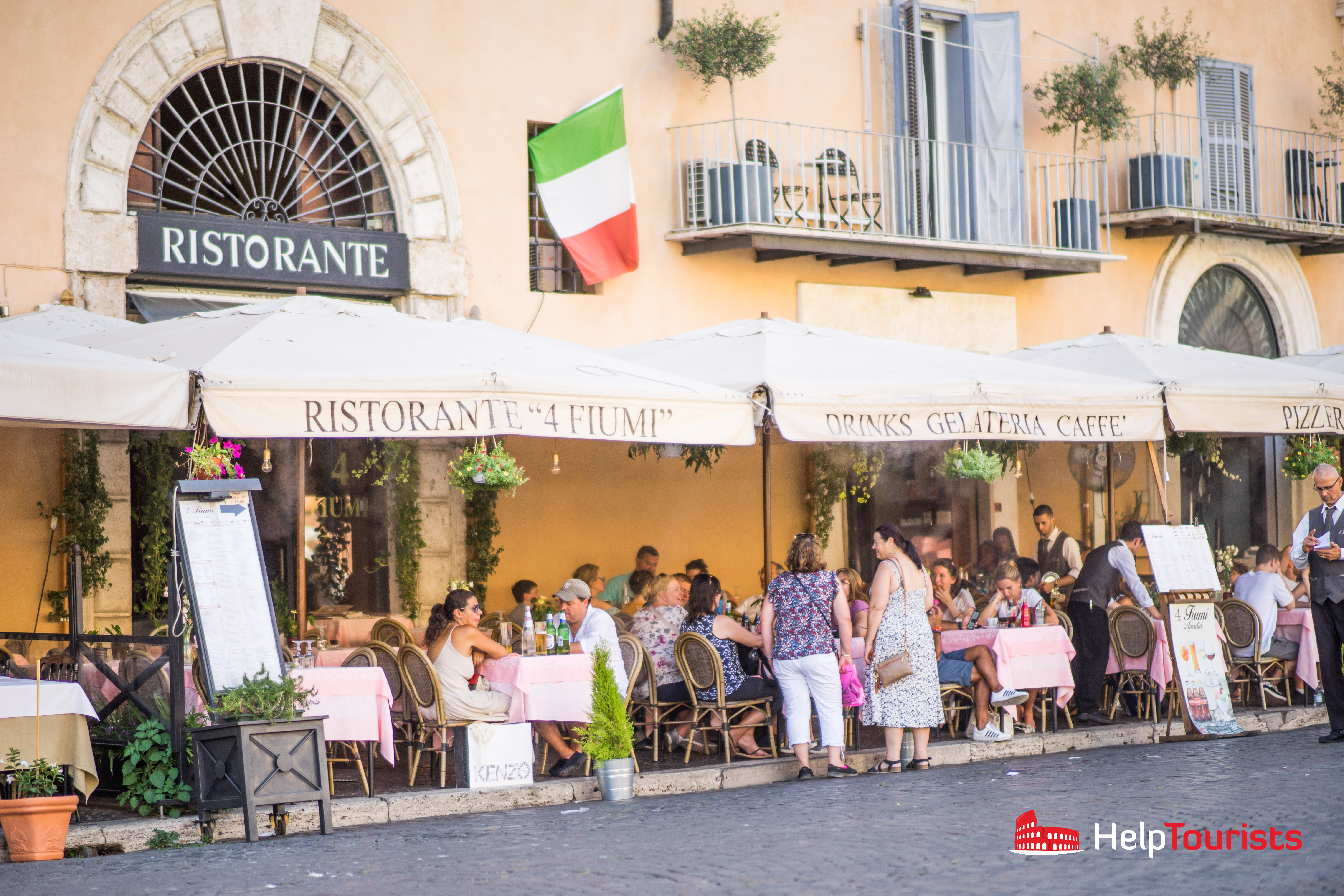
Worth mentioning is also the Vivi Bistrot at the entrance to the Museo di Roma in the Palazzo Braschi. Here you will find good service, small meals and drinks and an innovative kitchen with organic products. The Vivi Bistrot is open from Tuesday to Sunday from 10 am until midnight.
Piazza Navona Rome: The surroundings of the square
The entire area from Piazza Navona in Rome to the Tiber is very picturesque and is ideal for beautiful walks. Thy way to the Vatican leads you through the Via di Coronari past many antique shops. There are great pubs and bistros in this street. You can even find one of the best ice cream shops in this street: the Gelateria del Teatro.

Right behind the Piazza Navona is the German Church Santa Maria dell’Anima. It was built in the Italian Renaissance style and inaugurated in 1542.
-
On the back is the church of Santa Maria della Pace with the cloister of Bramante. The cloister is the first work of Bramante in Rome and an important work of the Renaissance of the 16th century. In the building there is a cafeteria where you can enjoy homemade cakes or small dishes with a view of the Sibyls of Rafael. It is open from 10am until 8pm.
-
If after your visit of Piazza Navona you want to enjoy good and cheap pasta, I recommend going to Solo Pasta in the Via della Vetrina. Solo Pasta offers pasta dishes from noon until the late afternoon. In the evening the restaurant is closed.
-
On the Corso del Rinascimento in the direction of Piazza delle Cinque Lune, lovers of sweet food will find one of Rome’s best patisseries, the Pasticceria 5 Lune. The pastry shop is behind a nondescript entrance. It offers sweet and salty pastries to take away. The pastry shop is open Tuesday to Sunday 7am until 9:30pm.
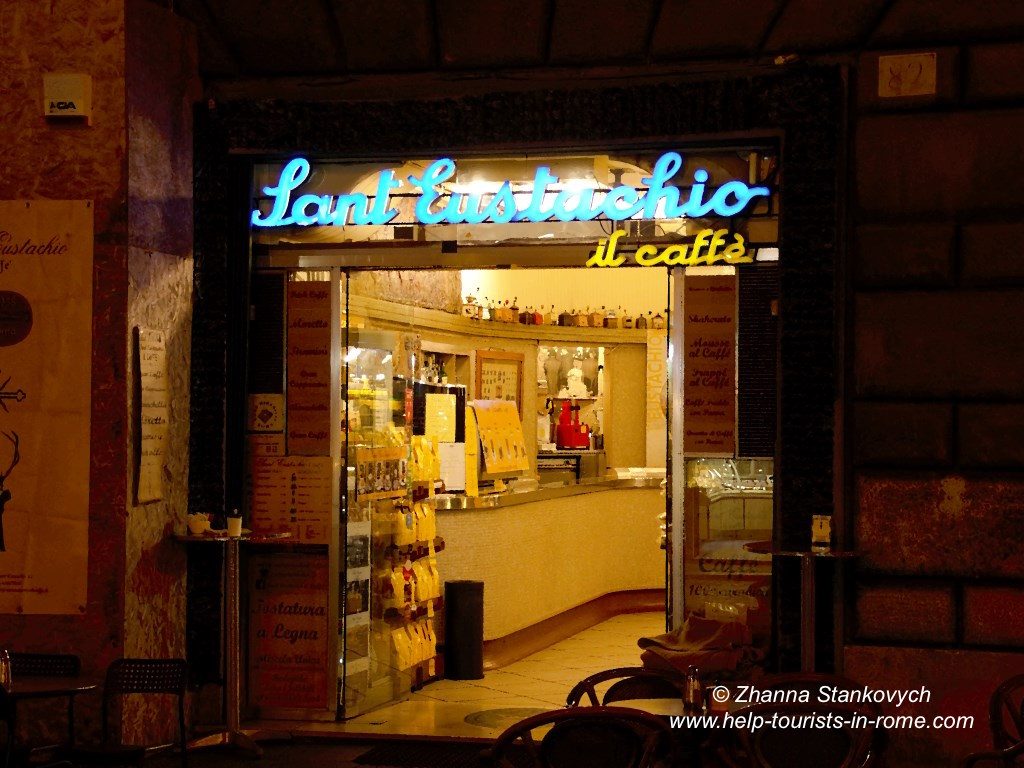
-
The road to the left of the Palazzo Madama will take you directly to the Pantheon. To the right of the palace you will reach the Piazza di Sant’Eustachio with the historic Caffè Sant’Eustachio. There is coffee in all possible variations. Particularly famous is the Gran Cafè, where the barista stirs the sugar in the coffee.
-
South of Rome’s Piazza Navona you get to Corso Vittorio Emanuele II. The bus 64 goes in one direction to the Vatican and in the other direction to Piazza Venezia and Termini. On the other side of the Corso, you will reach the square Campo de ‘Fiori.
-
North of Piazza Navona you get to the Tiber. On the other side of the river is the Palace of Justice and behind it Piazza Cavour. On the right before the Tiber, take the Via di Monte Brianzo right up to the Spanish Steps.
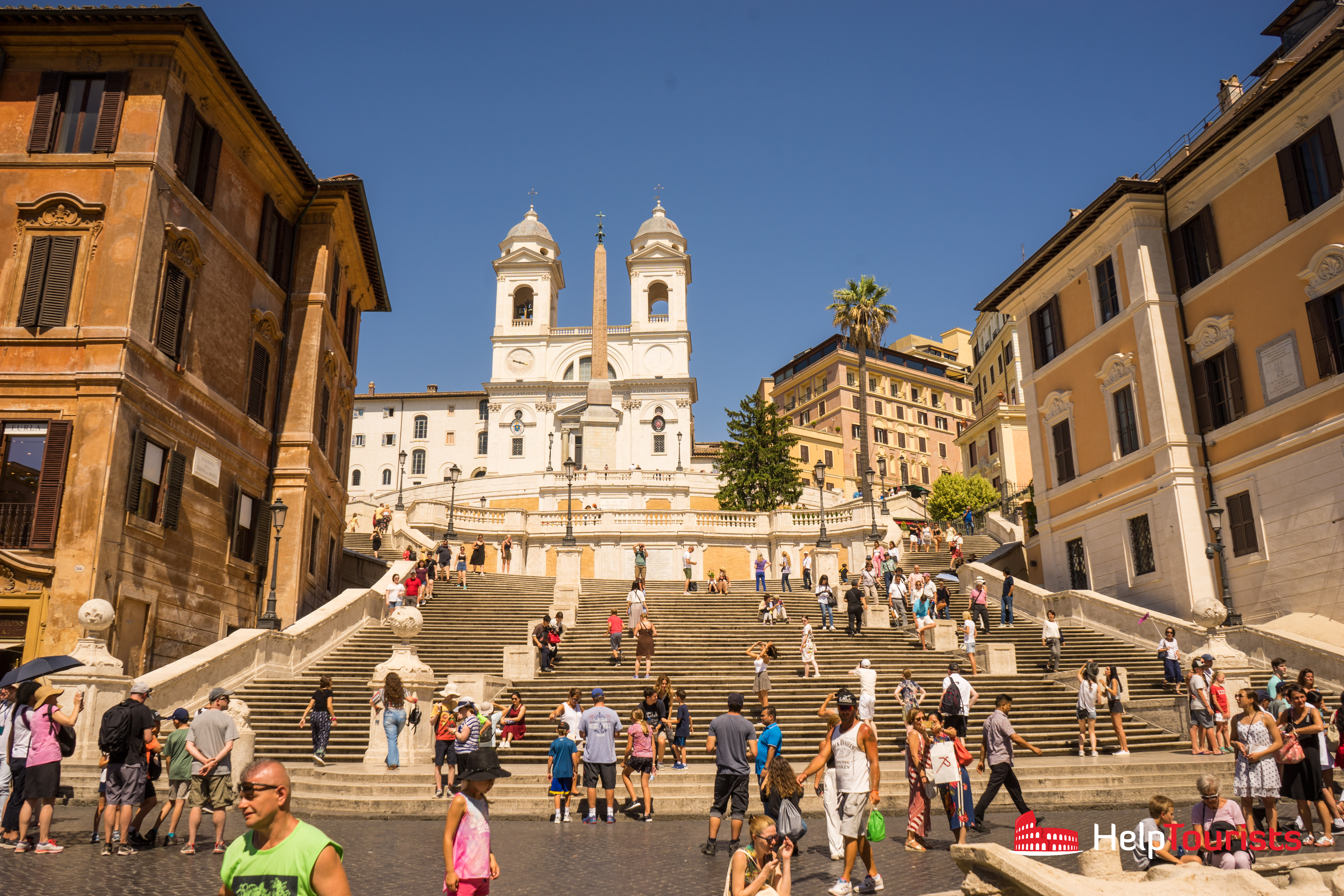
Social media
Become part of the HelpTourists community on Facebook! In our private group you can exchange ideas with other Rome lovers. Follow us on Instagram and Pinterest and get regular inspiration and insider tips for your next Rome trip!
Pin information about Piazza Navona in Rome on Pinterest
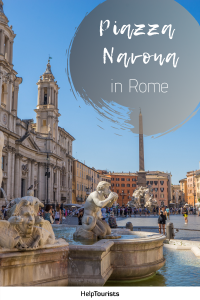
This article contains referral links. There are no additional costs for you, but thanks to these links we get a small commission. This enables us to continue to work diligently on the website and always have the latest information from Rome ready for you. Thank you for your support!








